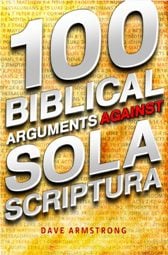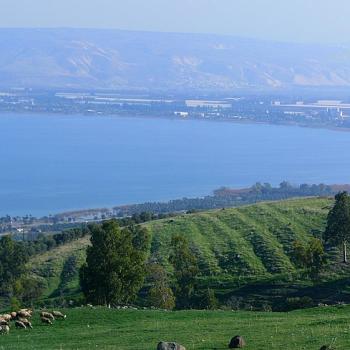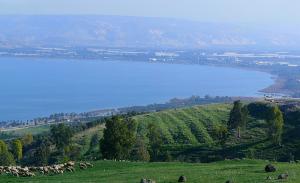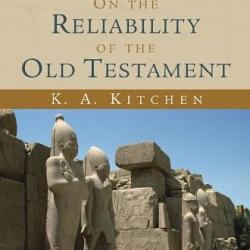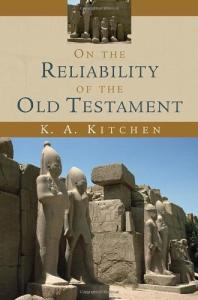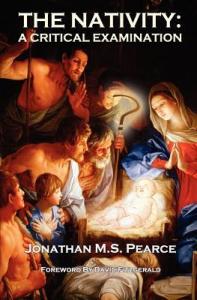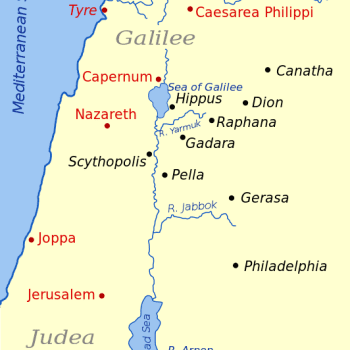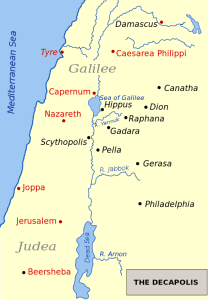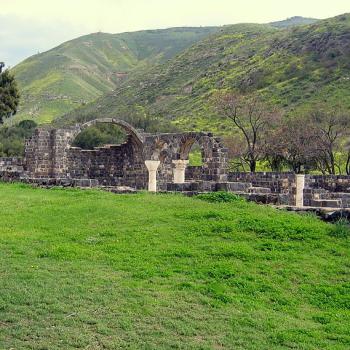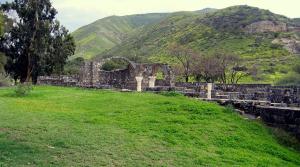Rev. Dr. Jordan B. Cooper is a Lutheran pastor, adjunct professor of Systematic Theology, Executive Director of the popular Just & Sinner YouTube channel, and the President of the American Lutheran Theological Seminary (which holds to a doctrinally traditional Lutheranism, similar to the Lutheran Church – Missouri Synod). He has authored several books, as well as theological articles in a variety of publications.
*****
I will be responding to Jordan’s two-part YouTube series on sola Scriptura: “An Explanation of Sola Scriptura“ (3-11-19), and “A Defense of Sola Scriptura“ (3-12-19). When I cite his words directly, they will be in blue, and citations and descriptions of his arguments will be accompanied by the time in the video as well.
For a Lutheran, it [sola Scriptura] means something very different than what it means for an Anabaptist or someone who’s part of the churches of Christ . . . even for the Reformed, who have kind of a similar view in some ways to the Lutheran tradition, but differ in other ways as well. And we’re all kind of lumped together . . . in reality, we have very different views in terms of what is the role of tradition, and is there any role of tradition whatsoever; is tradition an authority at all? [4:16-4:56]
Granted. Many on both broad sides (Protestant, Catholic) are too often guilty of ignoring fine and crucial distinctions in terms of defining views that they disagree with, among other Christians. This topic is notorious for that. I have a very good Catholic friend and fellow Catholic apologist with whom I differed on the definition. I contended that he was caricaturing the Protestant position and essentially opposing a straw man. He replied that I was over-intellectualizing it.
No! It’s important — absolutely essential in apologetics and theology — to get definitions and particularities / fine points right and to be intellectually honest when we oppose some theological position of a fellow believer, and to be charitable to them in presenting their own views. So I totally agree with this sentiment.
Sola Scriptura . . . recognizes that there are many authorities, but Scripture is the sole infallible authority, so Scripture has preference over all other authorities we might have. [5:16-5:27]
I totally agree again. The key is saying that the Bible is the sole infallible authority. It has to be qualified in that way. The logical corollary to that is to say that sacred or apostolic tradition and the Church are not infallible, as the Bible is. Jordan goes on to note that Scripture only is inspired or God-breathed (and I would add, it’s the only public revelation as well). Of course it is. No one denies that.
Catholics maintain, on the other hand, that the Bible is not the only infallible authority or source of the rule of faith (infallibility being a distinct and lesser gift over against inspiration). The true dispute, then, is whether the Church and tradition are ever infallible, as the Bible always is. That’s where the heart of he “battle” over these competing ideas lies. We say yes; Protestants, consistently following the definition of sola Scriptura, say (and must say) no.
I’m answering as I listen, so at this point I am very curious to see what Jordan thinks is the distinctively Lutheran version of sola Scriptura. What he says about it so far is identical to the working definition I have used in my extensive critiques (including three books): drawing from the definitions of Protestant apologists Keith Mathison, James White, and Norman Geisler: that of the first two came from their books on this topic.
There is a uniqueness in terms of the role of Scripture that nothing else can have, whether it’s traditions, whether it’s councils, whether it’s the authorities in the Church. And so it’s not to say that none of those things have any authority at all, but they’re not God-breathed, in the sense that Scripture is, so they don’t have the same status that Scripture itself has. And so Scripture is the thing that norms everything else. . . . all of those [other] things are to be submitted to Scripture. If there is a disagreement between a council and Scripture, or a Church father and Scripture, it is Scripture, ultimately, that is the higher authority, so that has the ultimate and final say. [5:34-6:18]
Inspiration is unique to Scripture, but it doesn’t follow that infallibility is also unique to Scripture: especially not if the Bible itself teaches that there are other infallible authorities, as I will show in due course. Catholics agree that Scripture is materially sufficient: all true Christian doctrines are taught in Scripture, either explicitly, implicitly, or as a deduction from clear biblical passages.
There is also development of doctrine (the great Lutheran theologian Jaroslav Pelikan wrote a lot about that), and some doctrines will be in Scripture only in a bare “kernel” or “acorn” form, but Catholics agree that there is something in Scripture about every true doctrine.
Accordingly, as a Catholic apologist specializing in “Biblical Evidence for Catholicism” (the name of my blog), I have produced biblical arguments for every Catholic doctrine that I have defended. Some evidences are much stronger than others, but I come up with something in every case.
As to councils and Church fathers, Catholics hold that (ecumenical) councils — like popes — are infallible only under certain conditions (including agreement with the pope, who “ratifies”: them). It follows that there can be non-infallible parts of them that are in error and/or are contrary to Scripture. Because of our qualifications, it doesn’t necessarily become a difficulty for the Catholic position when there is such a conflict. We believe that what has been proclaimed as infallible from councils and popes, is and will and must be in harmony with Holy Scripture.
As for Church fathers, we don’t teach that any of them are infallible. We hold that if they have a substantial (not literally unanimous) agreement on a given doctrine, that this is a fairly failsafe indication that the doctrine is in fact true, and part of authentic apostolic tradition. But by themselves they have no such authority, and that goes for even Doctors of the Church like St. Augustine (who was wrong in some ways about predestination), and St. Thomas Aquinas, who was wrong on the Immaculate Conception: but mainly due to the primitive biology of the time.
The Lutheran and Anglican positions would be pretty much on the same page here in terms of trying to find a balance between on the one hand holding to the unique authority of Scripture that is above all others, while also holding that tradition and councils and the historic worship of the Church: those things are important and we don’t have a right to just throw them out altogether. But, recognizing that they have limitations, that they’re not God-breathed . . . [7:12-7:45]
This is my understanding, too. It’s good as far as it goes (as far as it can go in Protestantism). But I think it ultimately breaks down and becomes inconsistent and self-defeating: in terms of what flows in the real world from such ideas. The difficulties in implementing such a position derive from the relationship of the Christian individual and these supposedly non-infallible teachings of tradition and an authoritative Church. Jordan says that they are “important”: and not at all worthless; we mustn’t discard them.
So far so good. On the other hand, sola Scriptura holds that they are always non-infallible. So the Protestant has to somehow decide which teachings of them are true (in which case I would note that they are — ironically — de facto or in a practical sense “infallible”) and which are not.
The Protestant would reply (I know, from many hundreds of debates) that all that is determined by adherence to Scripture. But of course (as we all know), Protestants have fairly serious disagreements amongst themselves about what Scripture teaches on a given doctrine. Scripture always has to be properly interpreted, and therein lies the perpetual dilemma for Protestants.
One example I always bring up is that they have five different major positions on baptism (infant regenerative, adult regenerative, infant symbolic, adult symbolic, and no baptism at all). They can’t agree about what “clear and perspicuous” Scripture teaches on baptism, and there is no end in sight for this disagreement. Blessedly, Lutherans and Catholics basically agree about baptism.
Protestants broadly agree with the earlier councils, when they were dogmatically defining the Holy Trinity, the Two Natures of Christ, the divinity of the Holy Spirit, the canon of the Bible (apart from the deuterocanon), and suchlike. But the third ecumenical council of Ephesus in 431 defined Theotokos (“Mother of God”) as a dogma. Lutherans and Anglicans have no problem with that; the Reformed / Calvinists do. The perpetual virginity of Mary was defined as orthodox dogma in the same council and also the Second Council of Constantinople in 553. All of the Protestant reformers (including Calvin) agreed with that doctrine; most Protestant today do not (and they do not, I argue, because of the inroads of theological liberalism starting in the 18th century).
The seventh ecumenical council at Nicaea in 787 condemned iconoclasm (the antipathy to images in worship and the Christian life). Lutherans agree (they have no problem with, for example, crucifixes and stained glass portrayals of the Bible); Reformed and Calvinists did not at all in the beginning of their existence, and often continue to not agree today. Both sides think that the Bible supports their position (as with all the other contested issues).
Catholics say that when a council of bishops from all over the world decides something important as binding on the faithful or not binding, with the agreement of the pope, that it’s infallible, and discussion on it ends. We have a way to end the controversy, whereas Protestants do not. Their only “solution” is to split from each other and form more denominations. Jordan is very familiar with this in his own Lutheran realm. I think it’s good (from within his paradigm) that his denomination followed Lutheran tradition and split from those who don’t, but the process of splitting itself is most unfortunate, because whenever disagreements of this sort continue on among Protestants, it means that error is necessarily institutionalized and sanctioned somewhere (wherever contradictions exist).
Someone must be wrong, or both are wrong, when they contradict each other. And errors and falsehood are bad things. Protestantism can’t resolve this. Catholicism and Orthodoxy can, because we reject sola Scriptura, which brings about this institutional chaos and doctrinal relativism, because (we would say) it denies what the Bible actually teaches about the rule of faith. I could go on and on about these matters, but I have to move on.
Jordan discussed [7:43-10:20] how the Reformed conception of authority differs from the Lutheran, by noting how in Reformed confessions (like Westminster), what is stated is backed up by Scripture in the footnotes, whereas in Lutheran Confessions / Book of Concord, “it consistently cites both Scripture and the Church fathers.” Very interesting. I didn’t know that. And it’s one more reason for my existing respect for Lutheranism as the best (and most “catholic”) Protestant tradition.
I do know, however, that many Reformed apologists seek to assert that the Church fathers back up their position, and Calvin’s Institutes certainly massively cites the fathers — as Jordan did note — (Augustine being the particular favorite among them). But I take Jordan’s word that Lutherans stress patristics more than Reformed.
He goes on to argue that the different views of the value of tradition play out differently in Reformed worship and Church government. What he discusses in the final section is an “in-house” fight and not directly related to questions of the validity of sola Scriptura itself, so I need not comment on it. In that dispute, I am firmly on the Lutheran rather than Reformed side.
The definition he gives in my second citation from him above is precisely the one I have been using in my critiques, going back literally 31 years now, since I was received into the Church. That being the case, my critiques accurately apply to the Lutheran conception of sola Scriptura. I have the same understanding of the proper definition that Jordan has.
In ending my reply to the first video, I’d like to quote a wonderful and positive (downright ecumenical) statement written in 1528 by Martin Luther, that rather strikingly backs up what Jordan says about Lutheranism and tradition:
We on our part confess that there is much that is Christian and good under the papacy; indeed everything that is Christian and good is to be found there and has come to us from this source. For instance we confess that in the papal church there are the true holy Scriptures, true baptism, the true sacrament of the altar, the true keys to the forgiveness of sins, the true office of the ministry, the true catechism in the form of the Lord’s Prayer, the Ten Commandments, and the articles of the creed . . . I speak of what the pope and we have in common . . . I contend that in the papacy there is true Christianity, even the right kind of Christianity and many great and devoted saints. . . . The Christendom that now is under the papacy is truly the body of Christ and a member of it. If it is his body, then it has the true spirit, gospel, faith, baptism, sacrament, keys, the office of the ministry, prayer, holy Scripture, and everything that pertains to Christendom. So we are all still under the papacy and therefrom have received our Christian treasures. . . . We do not rave as do the rebellious spirits, so as to reject everything that is found in the papal church. For then we would cast out even Christendom from the temple of God, and all that it contained of Christ. . . . They take a severe stand against the pope, but they miss their mark and murder the more terribly the Christendom under the pope. For if they would permit baptism and the sacrament of the altar to stand as they are, Christians under the pope might yet escape with their souls and be saved, as has been the case hitherto. But now when the sacraments are taken from them, they will most likely be lost, since even Christ himself is thereby taken away. (Concerning Rebaptism, written against the Anabaptists in January 1528; translated by Conrad Bergendoff; Luther’s Works, Vol. 40, pp. 229-262 [words above from pp. 231-233], from the original German in WA [Weimar Werke], Vol. 26:144-174)
***
Now I will reply to the second video, “A Defense of Sola Scriptura“ (3-12-19). Here Jordan gets into a biblical defense, which for my money is the most fascinating aspect of the debate (what I solely concentrated on in my most well-known book on the topic), and the area where I always challenge my Protestant friends to back up their views, because I think that it must necessarily be based on Scripture itself in order to not be viciously self-defeating (as a mere unbiblical “tradition of men” with no particular authority, failing that grounding in Scripture). Let’s see how Jordan makes his case. I look forward to it!
Again, I will be answering as I listen to the tape, which is how I like to reply to things. As I write this, then, I haven’t yet listened to the second presentation. So far, I greatly appreciate and admire Jordan’s clear, articulate, heartfelt presentation, and look forward to interacting to many more of his videos in the future, in a friendly, respectful fashion, with a fellow Christian worker and committed disciple of Jesus. We agree on a lot; where we disagree, I’m confident that it can be done within a context of friendliness, Christian fellowship and theological interaction (out of love for theology and for God), and mutual respect.
If you’re talking to a Roman Catholic apologist, when they’re speaking about sola Scriptura, they’re always gonna raise the same statement. Over and over again, you’re gonna hear this, . . . and that is, “Scripture never teaches sola Scriptura, so you are holding Scripture as the ultimate authority; however, Scripture itself never says that it is the only authority, therefore, you’re contradicting yourself, because necessarily, you’re going outside of Scripture to say that Scripture is the only standard, and therefore we can throw out sola Scriptura“; so the Bible doesn’t teach sola Scriptura, therefore sola Scriptura is false. [0:47-1:25]
Yep; that’s what we Catholic apologists hone in on, and we do because it’s always important to focus on premises, and whether they can be supported (I learned that from Socrates in my philosophy courses in college). Secondly, its called for by the nature of sola Scriptura: if everything must be backed up by Scripture, and if lacking such support, a position must be false, then obviously, sola Scriptura, as a theological (technically ecclesiological) notion, must itself pass this test as well. The Protestant can’t escape this burden of proof.
The problem with how he presents Catholic apologetic polemics in this respect (above) is that he referred to the caricature of a radical “Scripture alone” position, rather than the true definition of sola Scriptura (where he and I fully agree). That is, he didn’t include the crucial distinction of “Scripture is the only infallible authority.” Some Catholic apologists indeed make this mistake. I mentioned a friend of mine, above, who did so, so I know it happens, and heaven knows I know (as a veteran of some thousand or more online debates over 25 years) how often Protestant apologists distort and caricature our beliefs. It’s an unfortunately common human failing and the bane of attempted constructive debate.
But I do not make this serious mistake, and I believe I’ve written more about this topic than any other Catholic apologist alive. If Jordan notes that “Catholic apologists” too often are fighting straw men, I’ll always readily agree (though we might quibble about how common it is, and how many professional / credentialed apologists like myself do so). But in any event, this doesn’t allow him to escape his task of finding sola Scriptura in Scripture itself. I say from thirty years of intense study of the topic that it’s not there, period.
Thus, I am intensely interested to see where Jordan thinks he can find it in Holy Scripture, in any sense (indirect or otherwise). I want to know why he believes it, and as a Protestant, the basis has to always be primarily, first and foremost, a biblical rationale I think that is also true, by the way, of a Catholic defending any position. They must always grapple with the relevant scriptural data, and I consistently do so in my work.
I think the question that we have is: do we have to find a particular Scripture that says Scripture is the only authority? And I just don’t think we have to. We don’t. There’s nothing in — you can’t find — in any of Paul’s letters, for example, . . . “by the way, Scripture is the only authority and traditions are not an authority and there is no magisterium that is given some kind of infallible authority to pass on infallible teachings.” It seems like a lot of Roman Catholic apologists think that for Protestants to defend their position, that they have to find a text that says that.” [1:39-2:14]
It’s not required for there to be one text that explicit and detailed. It can be a combination of texts: all of which assert part of the equation, or an indirect deduction from same. But the idea has to be there somewhere, since the Protestant says that Scripture is the norm. Jordan himself said in his first video: “Scripture is the thing that norms everything else. . . . all of those [other] things are to be submitted to Scripture.” That includes the notion of sola Scriptura itself. How could it not?
If it doesn’t line up with the norm of Scripture, it’s false, according to the principle of sola Scriptura. It has to pass the test that it itself asserts as normative for everything else. The stream can’t rise above its source. It’s supremely important to line it up with the Bible, particularly because Protestants have made it one of their pillars, and a thing that determines whether all other doctrines are true or false. That supreme authority for the rule of faith can’t be a view that’s not even found in the Bible itself. Is this not self-evident?
I think, more so, what we have to do is just speak about the unique authority of Scripture and the unique nature of Scripture, and just to say that Scripture does present itself as God-breathed. 2 Timothy 3:16 is kind of the famous text that says this . . . [2:15-2:35]
This is the argument usually used, but it’s entirely beside the point and carries no force whatever. No Christian disagrees that only Scripture is God-breathed (inspired). It doesn’t follow that it is the only authority, as a result. Jordan already conceded that other authority exists in the Christian life (Church, tradition, fathers), but he denies (like a good Protestant always does) that they are infallible. But Scripture being the only inspired document doesn’t annihilate other infallible authorities. If it did, that would have to be stated in Scripture, and it never states such a thing.
On the other hand, the Bible does assert and support the Catholic / Orthodox rule of faith, in teaching the infallible authority of the Church in 1 Timothy 3:15 and at the Jerusalem Council (Acts 15), and it says that the Holy Spirit would guide the Church, as well as individual Christians. Here are relatively brief defenses of the first two arguments. I wrote about 1 Timothy 3:15 in my book, 100 Biblical Arguments Against Sola Scriptura (Catholic Answers: 2012, pp. 104-107, #82):
1 Timothy 3:15 [RSV] if I am delayed, you may know how one ought to behave in the household of God, which is the church of the living God, the pillar and bulwark of the truth.
Pillars and foundations support things and prevent them from collapsing. To be a “bulwark” of the truth, means to be a “safety net” against truth turning into falsity. If the Church could err, it could not be what Scripture says it is. God’s truth would be the house built on a foundation of sand in Jesus’ parable. For this passage of Scripture to be true, the Church could not err — it must be infallible. A similar passage may cast further light on 1 Timothy 3:15:
Ephesians 2:19-21 . . . you are fellow citizens with the saints and members of the household of God, [20] built upon the foundation of the apostles and prophets, Christ Jesus himself being the cornerstone, [21] in whom the whole structure is joined together and grows into a holy temple in the Lord;
1 Timothy 3:15 defines “household of God” as “the church of the living God.” Therefore, we know that Ephesians 2:19-21 is also referring to the Church, even though that word is not present. Here the Church’s own “foundation” is “the apostles and prophets, Christ Jesus himself being the cornerstone.” The foundation of the Church itself is Jesus and apostles and prophets.
Prophets spoke “in the name of the Lord” (1 Chron 21:19; 2 Chron 33:18; Jer 26:9), and commonly introduced their utterances with “thus says the Lord” (Is 10:24; Jer 4:3; 26:4; Ezek 13:8; Amos 3:11-12; and many more). They spoke the “word of the Lord” (Is 1:10; 38:4; Jer 1:2; 13:3, 8; 14:1; Ezek 13:1-2; Hos 1:1; Joel 1:1; Jon 1:1; Mic 1:1, et cetera). These communications cannot contain any untruths insofar as they truly originate from God, with the prophet serving as a spokesman or intermediary of God (Jer 2:2; 26:8; Ezek 11:5; Zech 1:6; and many more). Likewise, apostles proclaimed truth unmixed with error (1 Cor 2:7-13; 1 Tim 2:7; 2 Tim 1:11-14; 2 Pet 1:12-21).
Does this foundation have any faults or cracks? Since Jesus is the cornerstone, he can hardly be a faulty foundation. Neither can the apostles or prophets err when teaching the inspired gospel message or proclaiming God’s word. In the way that apostles and prophets are infallible, so is the Church set up by our Lord Jesus Christ. We ourselves (all Christians) are incorporated into the Church (following the metaphor), on top of the foundation.
1 Peter 2:4-9 Come to him, to that living stone, rejected by men but in God’s sight chosen and precious; [5] and like living stones be yourselves built into a spiritual house, to be a holy priesthood, to offer spiritual sacrifices acceptable to God through Jesus Christ. [6] For it stands in scripture: “Behold, I am laying in Zion a stone, a cornerstone chosen and precious, and he who believes in him will not be put to shame.” [7] To you therefore who believe, he is precious, but for those who do not believe, “The very stone which the builders rejected has become the head of the corner,” [8] and “A stone that will make men stumble, a rock that will make them fall”; for they stumble because they disobey the word, as they were destined to do. [9] But you are a chosen race, a royal priesthood, a holy nation, God’s own people, that you may declare the wonderful deeds of him who called you out of darkness into his marvelous light. (cf. Isa 28:16)
Jesus is without fault or untruth, and he is the cornerstone of the Church. The Church is also more than once even identified with Jesus himself, by being called his “Body” (Acts 9:5 cf. with 22:4 and 26:11; 1 Cor 12:27; Eph 1:22-23; 4:12; 5:23, 30; Col 1:24). That the Church is so intimately connected with Jesus, who is infallible, is itself a strong argument that the Church is also infallible and without error.
Therefore, the Church is built on the foundation of Jesus (perfect in all knowledge), and the prophets and apostles (who spoke infallible truth, often recorded in inspired, infallible Scripture). Moreover, it is the very “Body of Christ.” It stands to reason that the Church herself is infallible, by the same token. In the Bible, nowhere is truth presented as anything less than pure truth, unmixed with error. That was certainly how Paul conceived his own “tradition” that he received and passed down.
Knowing what truth is, how can its own foundation or pillar be something less than total truth (since truth itself contains no falsehoods, untruths, lies, or errors)? It cannot. It is impossible. It is a straightforward matter of logic and plain observation. A stream cannot rise above its source. What is built upon a foundation cannot be greater than the foundation. If it were, the whole structure would collapse.
If an elephant stood on the shoulders of a man as its foundation, that foundation would collapse. The base of a skyscraper has to hold the weight above it. The foundations of a suspension bridge over a river have to be strong enough to support that bridge.
Therefore, we must conclude that if the Church is the foundation of truth, the Church must be infallible, since truth is infallible, and the foundation cannot be lesser than that which is built upon it. And since there is another infallible authority apart from Scripture, sola scriptura must be false.
The Jerusalem Council (recorded in the Bible) demonstrated the sublime authority of the Church to make binding, infallible decrees (something sola Scriptura expressly denies can or should be the case). It claimed to be speaking in conjunction with the Holy Spirit (“it has seemed good to the Holy Spirit and to us”: Acts 15:28) and its decree was delivered as such by the Apostle Paul in several cities (“As they went on their way through the cities, they delivered to them for observance the decisions which had been reached by the apostles and elders who were at Jerusalem”: Acts 16:4). I’ve written about this council’s authority and its “Catholic” implications many times.
In other words, the Bible asserts what sola Scriptura expressly rules out (infallible entities other than Scripture), and in doing so, it directly refutes sola Scriptura. So it’s not just a matter of Protestants having to find proof of sola Scriptura in the Bible, but the fact that the Bible — God’s inspired revelation — contains strong disproofs of it. Going on and on about biblical inspiration doesn’t accomplish one whit towards a defense of sola Scriptura.
Jordan brings up 2 Timothy 3:16, which is always inevitable in any Protestant presentation. But it proves nothing of the sort. It never denies that Church or tradition can also be infallible (whereas 1 Timothy 3:15 and Acts 15-16 prove that they certainly can be). I made a counter-argument about it in my first book, A Biblical Defense of Catholicism: (1996, published in 2003):
Ephesians 4:11-16 (RSV) And his gifts were that some should be apostles, some prophets, some evangelists, some pastors and teachers, [12] to equip the saints for the work of ministry, for building up the body of Christ, [13] until we all attain to the unity of the faith and of the knowledge of the Son of God, to mature manhood, to the measure of the stature of the fulness of Christ; [14] so that we may no longer be children, tossed to and fro and carried about with every wind of doctrine, by the cunning of men, by their craftiness in deceitful wiles. [15] Rather, speaking the truth in love, we are to grow up in every way into him who is the head, into Christ, [16] from whom the whole body, joined and knit together by every joint with which it is supplied, when each part is working properly, makes bodily growth and upbuilds itself in love.
The “exclusivist” or “dichotomous” form of reasoning employed by Protestant apologists here is fundamentally flawed. . . . Note that in Ephesians 4:11-15 the Christian believer is “equipped,” “built up,” brought into “unity and mature manhood,” “knowledge of Jesus,” “the fulness of Christ,” and even preserved from doctrinal confusion by means of the teaching function of the Church. This is a far stronger statement of the “perfecting” of the saints than 2 Timothy 3:16-17, yet it doesn’t even mention Scripture.
Therefore, the Protestant interpretation of 2 Timothy 3:16-17 proves too much, since if all nonscriptural elements are excluded in 2 Timothy, then, by analogy, Scripture would logically have to be excluded in Ephesians. It is far more reasonable to synthesize the two passages in an inclusive, complementary fashion, by recognizing that the mere absence of one or more elements in one passage does not mean that they are nonexistent. Thus, the Church and Scripture are both equally necessary and important for teaching. This is precisely the Catholic view. Neither passage is intended in an exclusive sense. (pp. 15-16)
The burden is really on them [Catholics or Orthodox] to prove that anything else has those characteristics . . . [3:35-3:41]
I have shown above from Scripture two instances, illustrating an infallible Church. Again, I have to stress that the issue in dispute is not inspiration (where all traditional, historical, trinitarian Christians fully agree), but rather, the scope of infallibility. One is a Pauline passage and the other a description of what happened in history, with the Jerusalem Council exercising infallible, binding authority for the Church universal. What it proclaimed in Jerusalem was preached by Paul (Acts 16:4) as binding throughout Asia Minor (Turkey). So I’ve already met his challenge. Jordan hasn’t met our perfectly reasonable and scriptural challenge at all. But there are thirteen minutes left in this tape. Maybe he will attempt it before it’s over.
I fundamentally deny that principle at all that to prove sola Scriptura you have to prove that the Bible says sola Scriptura somewhere. [4:40-4:50]
I don’t see how a Protestant can possibly say that, by the nature of sola Scriptura, and because of the arguments I have made above. Of course they have to prove that it is taught in Scripture, or at the very least is harmonious with what clearly is taught there, just as they have to do with every other doctrine they believe (and as we Catholics also have to do).
You have to prove that something else has that uniqueness that Scripture itself has, and claims for itself, and I don’t think that tradition, in the various forms . . . has that. [4:55-5:09]
Jordan has, more and more, as he goes on, shifted the discussion from infallibility, where it belongs, and which he mentioned in the first video as essential to the definition of sola Scriptura, to the “uniqueness” of Scripture (i.e., its inspiration). I think this is obfuscation. I don’t say he is deliberately doing it. He probably doesn’t realize it, but all of a sudden he’s implying that we have to prove that tradition and the Church are “God-breathed” as Scripture is. No one (of note) has ever said that they are that, — and anyone who did was clueless and theologically uneducated or heretical –, because it’s 1) untrue, and 2) isn’t the issue! The issue is “what is infallible? Does only the Bible have that characteristic?”
The high irony in this sort of argumentation is that Protestants always point out (as Jordan did in his first video) how so many Catholics botch the definition of sola Scriptura, leaving out the “infallibility” aspect. But then when it comes to having to defend the belief from Scripture, all of a sudden they completely neglect the infallibility aspect and talk only of inspiration, which is a completely separate issue and topic. It’s switching horses in mid-stream and it won’t do. Jordan has literally refused to defend it from Scripture; in effect he has conceded the entire discussion in so doing and has literally reduced his strongly held belief in sola Scriptura to a self-defeating proposition.
He then goes back to the “classic” text of 2 Timothy 3:16-17. What he argues is defeated, in my opinion, by reading Ephesians 4:11-16, which says much of the same thing, while never even mentioning Scripture. He mentions that it 2 Timothy said that the Bible was sufficient “to equip for every good work.” Yes it does. But so, too, does Ephesians 4:12, which states “to equip the saints for the work of ministry, for building up the body of Christ” while never mentioning Scripture in the entire context. Instead, the cause of those things are the offices of the Church and God’s gifts.
In conclusion, Jordan hasn’t offered us anything in the Bible to prove that the Bible is the only infallible authority, or anything in the Bible that denies that the Church or tradition can also possess that characteristic under carefully defined conditions. He gives us nothing that is of any force against Catholic tradition, and nothing that supports Protestant traditions where they differ with us.
He goes on to comment on Matthew 15: a passage about the Pharisees and their traditions, ultimately drawing an analogy between the first-century Jews and their traditions, added to Scripture, and Catholic tradition, and says that when they conflict, Scripture trumps tradition. This is the classic Protestant argument: implying that “tradition is a dirty word” in the New Testament. The big problem I have with it is that Jesus, several times, contrasts the bad traditions of men with the good apostolic — or longstanding Jewish — tradition, so that it’s not a clear-cut case of “Bible good, tradition bad.” Tradition can be (and is, in the NT) good or bad. Hence, these passages (“bad traditions” in red and “good” ones in green):
Matthew 15:3 He answered them, “And why do you transgress the commandment of God for the sake of your tradition?”
Matthew 15:6 So, for the sake of your tradition, you have made void the word of God.
Matthew 15:9 In vain do they worship me, teaching as doctrines the precepts of men.
Matthew 16:23 But he turned and said to Peter, “Get behind me, Satan! You are a hindrance to me; for you are not on the side of God, but of men” (cf. Mk 8:33).
Mark 7:8-9, 13 You leave the commandment of God, and hold fast the tradition of men.” And he said to them, “You have a fine way of rejecting the commandment of God, in order to keep your tradition! . . . thus making void the word of God through your tradition which you hand on. And many such things you do.”
Now, if Jordan and other Protestants want to quibble and say that Jesus doesn’t positively use the specific word “tradition” (paradosis), I retort that the usages above are (in context) equivalent. This is borne out all the more in Paul’s epistles, where he seems to have no such consciousness that tradition per se is a bad or almost always corrupt thing. He is so far from that, that he actually appears to place tradition on a par with Scripture, the gospel, and “the faith” (in terms of authority):
1 Corinthians 11:2 Maintain the traditions . . . . even as I have delivered them to you.
2 Thessalonians 2:15 Hold to the traditions . . . . taught . . . by word of mouth or by letter.
2 Thessalonians 3:6 . . . the tradition that you received from us.
1 Corinthians 15:1 . . . the gospel, which you received . . .
Galatians 1:9 . . . the gospel . . . which you received.
1 Thessalonians 2:9 We preached to you the gospel of God.
Acts 8:14 Samaria had received the word of God.
1 Thessalonians 2:13 You received the word of God, which you heard from us, . . .
2 Peter 2:21 . . . the holy commandment delivered to them.
Jude 3 . . . the Faith which was once for all delivered to the saints.
It is obvious from the above biblical data that the concepts of tradition, gospel, and word of God (as well as other terms) are essentially synonymous. All are predominantly oral, and all are referred to as being delivered and received. Tradition is right in there with them, without distinction. In St. Paul’s two letters to the Thessalonians alone we see that three of the above terms are used interchangeably.
In 2 Thessalonians “gospel” is mentioned twice (1:8 and 2:14), “tradition” twice (2:15 and 3:6), but neither “Scripture” nor “Scriptures” appears. “Word of the Lord” appears once (3:1), but it appears not to refer to the Bible. Likewise, in 1 Thessalonians “Scripture” or “Scriptures” never appear. “Word,” “word of the Lord,” or “word of God” appear five times (1:6,8, 2:13 [twice], 4:15), but in each instance it is clearly in the sense of oral proclamation, not Scripture.
Clearly then, tradition is not a dirty word in the Bible, particularly for St. Paul. If, on the other hand, one wants to maintain that it is, then gospel and word of God are also bad words! Thus, the commonly asserted dichotomy between the gospel and tradition, or between the Bible and tradition is unbiblical itself and must be discarded by the truly biblically minded person as (quite ironically) a corrupt tradition of men.
Paul is elsewhere almost unanimously positive about tradition. In the one place where he wasn’t (Col 2:8), he made a contrast of good and bad tradition, just as Jesus did:
Philippians 4:9 What you have learned and received and heard and seen in me, do; and the God of peace will be with you.
Colossians 2:8 See to it that no one makes a prey of you by philosophy and empty deceit, according to human tradition, according to the elemental spirits of the universe, and not according to Christ.
2 Timothy 1:13-14 Follow the pattern of the sound words which you have heard from me . . . guard the truth which has been entrusted to you by the Holy Spirit who dwells within us.
2 Timothy 2:2 And what you have heard from me before many witnesses entrust to faithful men who will be able to teach others also.
The bottom line of Jordan’s presentation is that the Protestant simply accepts sola Scriptura on faith as a (trusted, venerable, even sentimental) Protestant “tradition of men” and standard for all doctrines, even though it is (admittedly) a doctrine that can’t (with supreme irony) be found in the Bible. Jordan freely admitted that.
I do really appreciate his transparent honesty in admitting that the thing itself can’t be found in Holy Writ (only the uniqueness and inspiration of Scripture, which no serious, observant Christian denies). I’ve been making this point for over thirty years, so the support and agreement of a popular and influential Lutheran pastor in this respect is most welcome: very surprising, but welcome.
***
Practical Matters: Perhaps some of my 4,000+ free online articles (the most comprehensive “one-stop” Catholic apologetics site) or fifty books have helped you (by God’s grace) to decide to become Catholic or to return to the Church, or better understand some doctrines and why we believe them.
Or you may believe my work is worthy to support for the purpose of apologetics and evangelism in general. If so, please seriously consider a much-needed financial contribution. I’m always in need of more funds: especially monthly support. “The laborer is worthy of his wages” (1 Tim 5:18, NKJV). 1 December 2021 was my 20th anniversary as a full-time Catholic apologist, and February 2022 marked the 25th anniversary of my blog.
PayPal donations are the easiest: just send to my email address: [email protected]. You’ll see the term “Catholic Used Book Service”, which is my old side-business. To learn about the different methods of contributing, including 100% tax deduction, etc., see my page: About Catholic Apologist Dave Armstrong / Donation Information. Thanks a million from the bottom of my heart!
***
Summary: Lutheran pastor and theologian Jordan B. Cooper did two videos on the general subject matter of “Is Sola Scriptura Biblical?” I provide arguments for why it isn’t.



